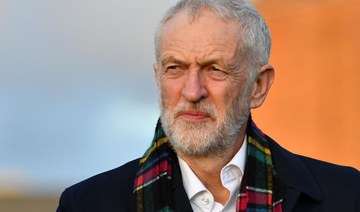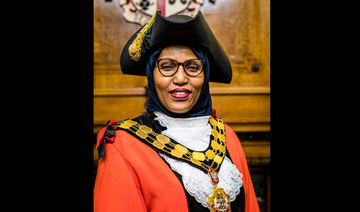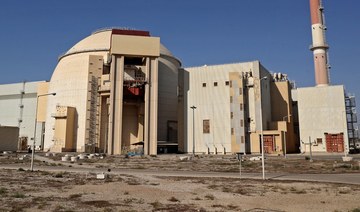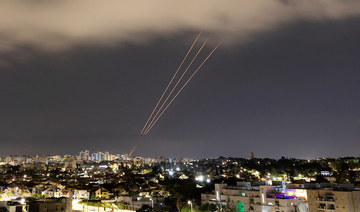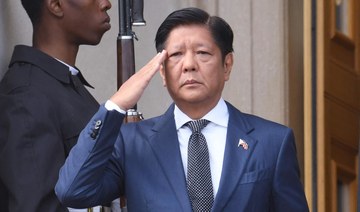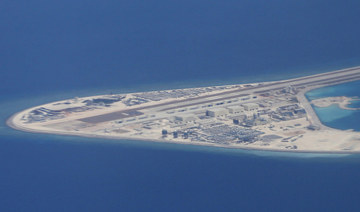LONDON: More than half of Muslim members of the UK’s main opposition Labour Party question its leaders’ ability to tackle Islamophobia, a new survey has found.
The study, conducted by the Labour Muslim Network (LMN), revealed that 55 percent of Muslim members said they do not “trust the leadership to tackle Islamophobia effectively.”
A further 59 percent, including supporters outside the party, said they do not feel “well represented by the leadership.”
The survey also found that more than a quarter of Muslims have experienced Islamophobia within the party.
About 48 percent of Labour’s Muslim members said they do not have confidence in the party’s ability to deal with complaints “effectively.”
The survey also found that 44 percent think that Labour is failing to take Islamophobia “seriously.”
Labour has said it will meet with the LMN to find a solution to the “scourge” of Islamophobia.
“We thank the LMN for this important report, as well as their work to ensure our Muslim members are represented, included and heard,” Labour leader Keir Starmer and deputy leader Angela Rayner said in a statement.
“Islamophobia has no place in our party or society and we are committed to rooting it out. We look forward to working with the LMN to implement their recommendations.”
Most UK Labour Muslim members do not trust leadership over Islamophobia: Poll
https://arab.news/r5eq5
Most UK Labour Muslim members do not trust leadership over Islamophobia: Poll
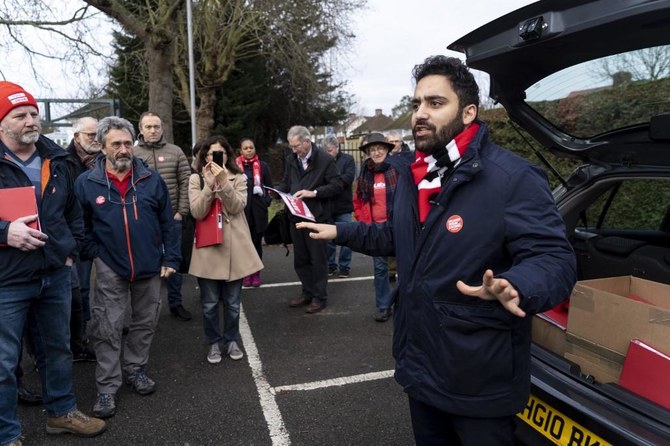
- Over 25% of Muslims say they have experienced Islamophobia within the party
- Nearly half of Muslim members said they do not have confidence in the party’s ability to deal with complaints “effectively”
India’s Lok Sabha election 2024: What you need to know
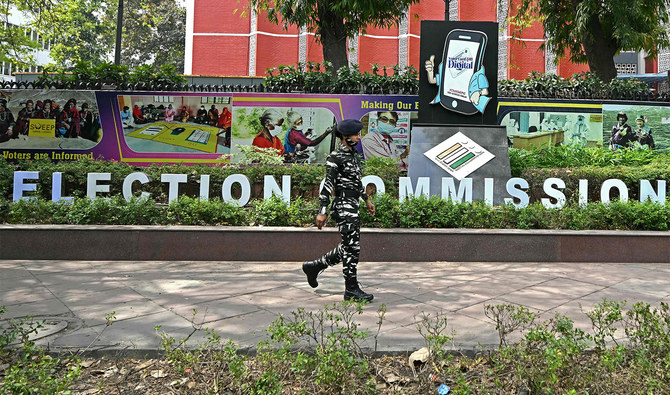
- India is holding the world’s biggest election starting this month, with nearly one billion people eligible to vote
- Votes to be counted on June 4 after polling done on April 19, April 26, May 7, May 13, May 20, May 25, June 1
India is holding the world’s biggest election starting this month, with nearly 1 billion people eligible to vote and Prime Minister Narendra Modi in the pole position.
WHAT IS IT?
Elections to the 543 contested seats in the lower house of parliament, called the Lok Sabha, for a term of five years. To rule, a party or a coalition needs a simple majority of 272 seats. Prime Minister Narendra Modi’s Bharatiya Janata Party (BJP) won 303 seats the last time, followed by 52 for the main opposition Indian National Congress (INC).
In addition to the contested seats, India’s president can nominate up to two Anglo-Indians to the Lok Sabha.
The Bharatiya Janata Party, BJP, won 303 seats in 2019 general election. The second largest party, the Indian National Congress, INC, won 52 seats. The Dravida Munnetra Kazhagam, DMK, emerged as the third largest party.
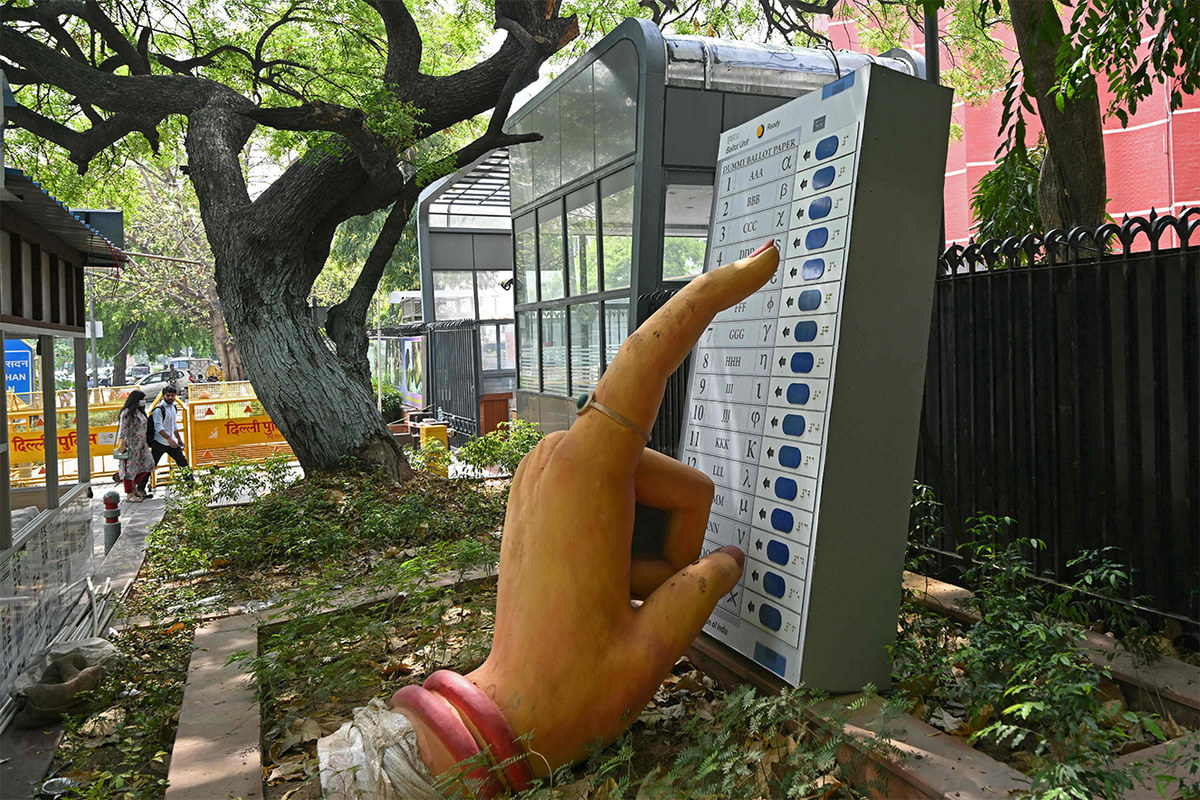
WHERE AND WHEN IS IT TAKING PLACE?
The elections will be conducted in seven phases partly to ensure sufficient security at polling booths across the vast country. Voters can make their choice by pressing a button on an electronic voting machine, first used in India in 1982 and more widely since the early 2000s.
Votes will be counted on June 4 after polling is done on April 19, April 26, May 7, May 13, May 20, May 25 and June 1.
The elections in the world’s largest democracy for 543 seats will be held in 7 phases.
HOW DOES IT WORK?
The world’s most populous nation follows the first-past-the-post system, where voters cast a vote for a single candidate in a constituency and the candidate with the most votes wins the seat. The voting age is 18 years and contestants need to be at least 25 years old.
A total of 968 million voters are registered, out of which 497 million are men and 471 million are women. A higher percentage of women voters than men are likely to vote for the second time in a row.
WHO ARE THE MAIN CANDIDATES?
Modi headlines the race, followed by his de facto deputy Amit Shah and the main opposition face, Rahul Gandhi of the Congress party. Gandhi’s mother Sonia, the matriarch of the Nehru-Gandhi dynasty, is not contesting this time.
WHY IS IT IMPORTANT?
Modi is chasing a record-equalling third straight term like India’s first prime minister, Jawaharlal Nehru. Modi says another overwhelming victory for the National Democratic Alliance, led by the BJP, is crucial to meet his goal of lifting India to a developed economy by 2047 from middle-income levels. The world’s fifth-largest economy has grown fast in the past few years and Modi has “guaranteed” to take it to the third position if he wins the election.
The BJP draws its support mainly from Hindus, who form 80 percent of the country’s 1.42 billion people and for whom Modi earlier this year delivered on a key party promise of building a grand Hindu temple on a disputed site.
The opposition “INDIA” alliance, largely a center-left grouping of more than two dozen disparate parties, says a victory for it is essential to save the country’s democratic and secular setup, lift its marginalized communities, raise prices for farmers and create jobs for its young. Opinion polls, which have a mixed record in India, predict another thrashing of the Congress alliance at the hands of the BJP.
US Treasury preparing new Iran sanctions after Israel attack, Axios reports
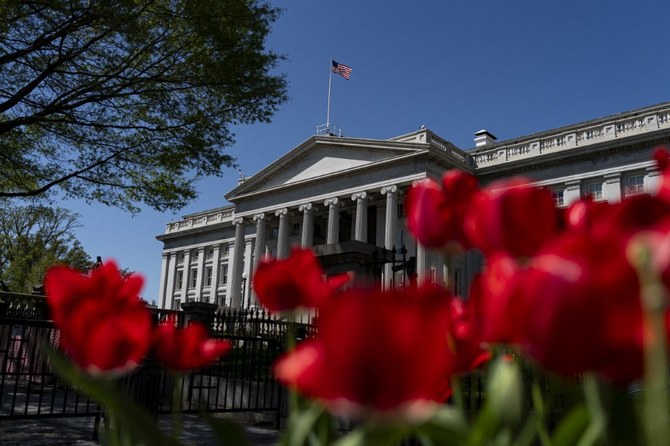
- Iran’s actions threatened stability in the Middle East and could cause economic spillovers
US Treasury Secretary Janet Yellen is preparing fresh sanctions on Iran in response to Iran’s attack on Israel, Axios reported on Tuesday, citing a copy of her remarks.
“Treasury will not hesitate to work with our allies to use our sanctions authority to continue disrupting the Iranian regime’s malign and destabilizing activity,” Yellen is prepared to say Tuesday, as per the Axios report.
“The attack by Iran and its proxies underscores the importance of Treasury’s work to use our economic tools to counter Iran’s malign activity,” she will further say, Axios reported.
Yellen said previously that Iran’s actions threatened stability in the Middle East and could cause economic spillovers, adding that the US would use sanctions and work with allies.
Afghanistan’s first female Olympian calls for Paris Games ban over Taliban’s rights record

- Friba Rezayee was 18 when she stepped onto the mat at 2004 Olympics in historic moment for her country
- Taliban say they respect women’s rights in line with their interpretation of Islamic law and local customs
GENEVA: Friba Rezayee, the first woman to represent Afghanistan at the Olympics, has been appalled by the treatment of women since the resurgence of the Taliban and is now campaigning for the country to be kept out of the Paris Games.
Rezayee, a judoka who competed at the 2004 Olympics in Athens, has called on the International Olympic Committee (IOC) to ban Afghanistan due to the Taliban’s human rights record. She has argued that under a such ban, Afghan women should still be allowed to participate as part of the IOC Refugee Olympic Team.
“Given tons and tons of evidence about the Taliban, about their brutal treatment of women and children, they are very dangerous,” Rezayee, who now lives in Vancouver, told Reuters.
“If the IOC allows them to enter the Olympics at the heart of Europe, in Paris in 2024, it’s very dangerous for the people.”
Zabihullah Mujahid, spokesman for the Taliban administration, declined to comment.
The Taliban — who say they respect women’s rights in line with their interpretation of Islamic law and local customs — have closed girls’ high schools and placed travel restrictions on women without a male guardian and restricted access to parks and gyms.
Asked to comment on Rezayee’s call, the IOC referred to a statement made last month by James Macleod, its Director of National Olympic Committee Relations and Olympic Solidarity.
Macleod said at the time that the IOC was in dialogue with Afghanistan’s National Olympic Committee (NOC) and sport authorities “with the aim to reverse the current restrictions on access to sport for women and young girls in Afghanistan.”
He said that although the IOC acknowledged different views on whether Afghanistan’s NOC should be suspended, it “doesn’t believe that isolation of the Afghan sporting community at this time is the right approach.”
Separately, the IOC said that athletes needed a refugee status confirmed by the United Nations refugee agency to be eligible for the IOC Refugee Olympic Team.
'STRONGER THAN MEN WITH GUNS'
Rezayee was 18 when she stepped onto the mat in Athens in a historic moment for her country. She was convinced her pioneering role would help advance women’s rights.
“I actually believed that we would only progress from here,” she said. “When I returned from Athens, I stayed in Afghanistan and I wanted to stay in Afghanistan. I continued my training because I saw the important changes it was making in every single girl’s life.”
But her hopes of seeing her countrywomen gain more rights were crushed when the Taliban seized power in August 2021.
“It feels like whatever I did to support women’s rights and gender equality back in 2004, it has been all undone by the IOC and by the Taliban and people who tolerate the Taliban,” Rezayee said.
In February, a United Nations expert described the Taliban’s disrespect for the rights of women and girls as “unparalleled in the world,” and said their takeover had “exacerbated a high prevalence of gender-based violence against women and girls.”
The IOC suspended Afghanistan’s NOC in 1999, and the country was barred from the 2000 Sydney Games. Afghanistan was reinstated after the fall of the Taliban, in time for Rezayee to compete in Athens.
Rezayee, who left Afghanistan in 2011 and settled in Canada, founded Women Leaders of Tomorrow, a non-profit that provides scholarships and education programs for Afghan women, including athletes.
The 38-year-old has received threats for her activism.
“I believe that my principles and the principles of human rights, women’s rights and women’s dignity are stronger than men with guns,” she said.
The Philippine president says he won’t give US access to more local military bases
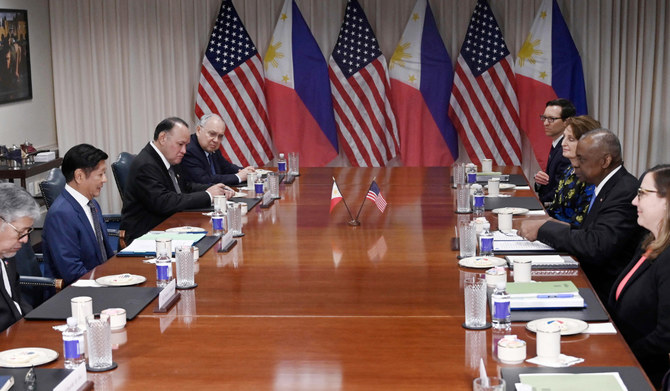
- “The Philippines has no plans to create any more bases or give access to any more bases,” Marcos said, without elaborating in response to a question during a forum with Manila-based foreign correspondents
MANILA, Philippines: The Philippine president said Monday his administration has no plan to give the United States access to more Philippine military bases and stressed that the American military’s presence in several camps and sites so far was sparked by China’s aggressive actions in the disputed South China Sea.
President Ferdinand Marcos Jr., who took office in 2022, allowed American forces and weapons access to four additional Philippine military bases, bringing to nine the number of sites where US troops can rotate indefinitely under a 2014 agreement.
The Biden administration has been strengthening an arc of security alliances in the region to better counter China, a move that dovetails with Philippine efforts to shore up its external defense, especially in the South China Sea.
Marcos’ decision last year alarmed China because two of the new sites were located just across from Taiwan and southern China. Beijing accused the Philippines of providing American forces with staging grounds, which could be used to undermine its security.
“The Philippines has no plans to create any more bases or give access to any more bases,” Marcos said, without elaborating in response to a question during a forum with Manila-based foreign correspondents.
Asked if he was concerned that allowing the US military access to Philippine bases had provoked Chinese actions in the South China Sea, Marcos said the presence of US troops was in response to China’s moves.
“These are reactions to what has happened in the South China Sea, to the aggressive actions that we have had to deal with,” he said, mentioning Chinese coast guard vessels using water cannons and lasers to deter Philippine ships from the area Beijing claims as its own.
He also mentioned collisions, blocking of Filipino fishermen and sea barriers to block ships from Scarborough Shoal, which lies in the Philippine economic zone.
Under Marcos, the Philippines has adopted a strategy of publicizing the incidents by allowing journalists to board its patrol ships to witness China’s assertive actions.
“It is crucial that the media … continue to expose these actions that not only threaten the peace and stability of the region but also undermine the rules-based order that has underpinned global development and prosperity over the previous century,” Marcos said.
China has blamed the Philippines for sparking the confrontations by intruding into what it says were Chinese territorial waters and reneging on an alleged agreement to pull away an old Philippine navy ship, which now serves as Manila’s territorial outpost in the disputed Second Thomas Shoal.
Marcos said he was not aware of any such deal, and added that he considers the deal rescinded — if it ever existed.
Last week, President Joe Biden renewed Washington’s “ironclad” commitment to defend Pacific allies in a summit with Marcos and Japanese Prime Minister Fumio Kishida at the White House. He reiterated that the US is obligated to defend the Philippines if its forces, aircraft or ships come under an armed attack.
Asked when the 1951 Mutual Defense Treaty between the US and the Philippines could be invoked amid territorial hostilities between China and the Philippines, Marcos cited Defense Secretary Lloyd Austin as saying that could happen “if any Filipino serviceman is killed on an attack from any foreign power.”
Boeing says testing of 787 proves aircraft is safe

- While Boeing maintains that around 99 percent of the gaps conform to the .005 inch standard, a small percentage exceeds it
NEW YORK: Boeing defended its safety practices Monday, touting aircraft testing protocols as it girds for a tough congressional hearing featuring critics of the embattled aviation giant.
“Boeing is confident in the safety and durability of the 787 and 777,” the company said in a powerpoint presentation accompanying a media briefing with two senior engineers, who summarized exhaustive testing procedures to refute whistleblower allegations that some 1,400 Boeing planes suffer from significant safety issues.
Wednesday’s Senate hearing is scheduled to include testimony from Boeing engineer Sam Salehpour, who went public last week with sweeping charges alleging Boeing’s safety practices are deficient and that the company retaliated against him for speaking out.
The hearing, titled Examining Boeing’s Broken Safety Culture: Firsthand Accounts, comes as regulators and politicians escalate scrutiny of Boeing in the wake of a near-disastrous January 5 Alaska Airlines flight on a 737 MAX that made an emergency landing after a panel of the fuselage blew out in mid-flight.
Salehpour’s charges include allegations that the 787 Dreamliner contains gaps between parts well above company standards, a dynamic that could “ultimately cause a premature fatigue failure without any warning,” creating unsafe conditions “with potentially catastrophic accidents,” according to an official complaint to the Federal Aviation Administration released by Salehpour’s attorneys.
Steve Chisholm, chief engineer for Boeing Mechanical and Structural Engineering, told reporters gathered at a Charleston, South Carolina factory and on a webcast, that “there was zero fatigue” found in testing.
“We were not surprised by the lack of fatigue findings,” said Chisholm, who noted that the composite materials behind the 787 were picked because they do not fatigue or corrode like traditional metals.
Described by his attorneys as a veteran quality engineer at Boeing, Salehpour slammed Boeing for a series of “shortcuts” that have “allowed potentially defective parts and installations in 787 fleets,” according to the FAA complaint.
To compensate for gaps between parts beyond the .005 inch standard set by Boeing, Salehpour said Boeing has employed force during assembly of 165 times the recommended level of 10 pounds.
After Salehpour’s complaint last week, Boeing released a lengthy rebuttal insisting it is “fully confident” in the aircraft and noting that regulators with the FAA signed off on Boeing’s processes when the company addressed the gap issue in 2022.
Company engineers pointed to testing for plane fatigue undertaken between 2010 and 2015 involving 165,000 cycles, or simulations of 165,000 flights.
In this process, a 787 was placed in a test rig and subjected to pressurization meant for a time period more than three times as long as the aircraft’s expected 787 lifespan of 44,000 cycles.
Company employees raised concerns about gaps and other aspects of the 787 in the 2020-2022 time period.
With 787 deliveries suspended during large stretches of this span, the company removed thousands of fasteners on some 120 planes in inventory and conducted rework on eight planes, company officials said.
While Boeing maintains that around 99 percent of the gaps conform to the .005 inch standard, a small percentage exceeds it.
However, testing has shown no sign of fatigue, said Chisholm, who also described the elevated force during manufacturing as a non-issue.
“We’re talking about 150 pounds on structure that’s meant to carry many thousands of pounds of load. This is not a large load,” Chisholm said. “It’s acceptable.”



